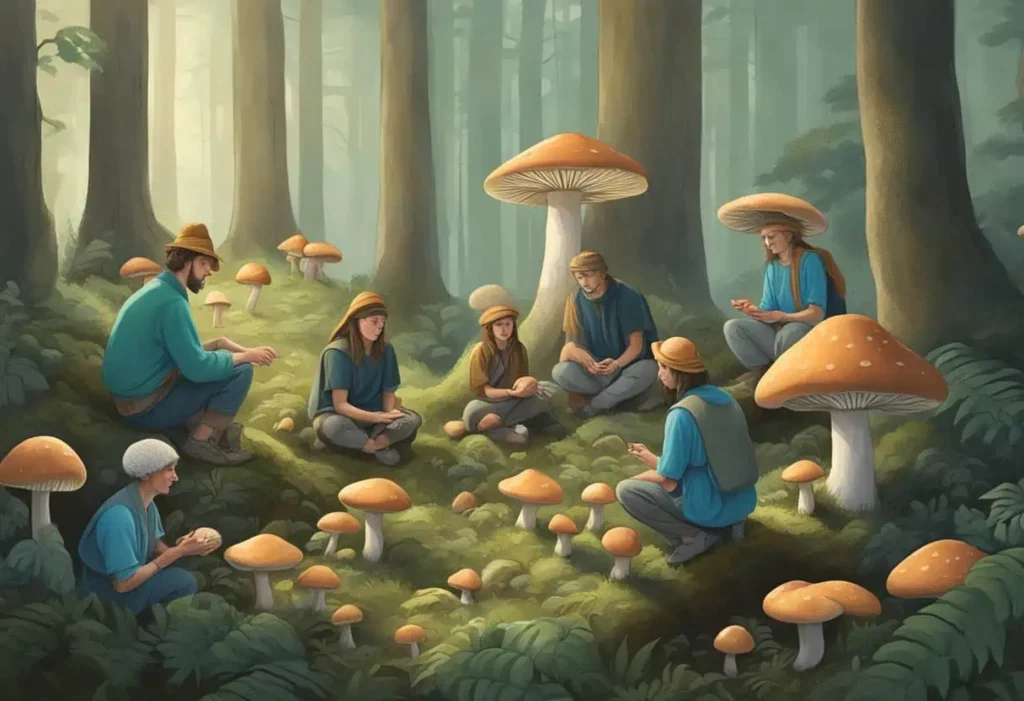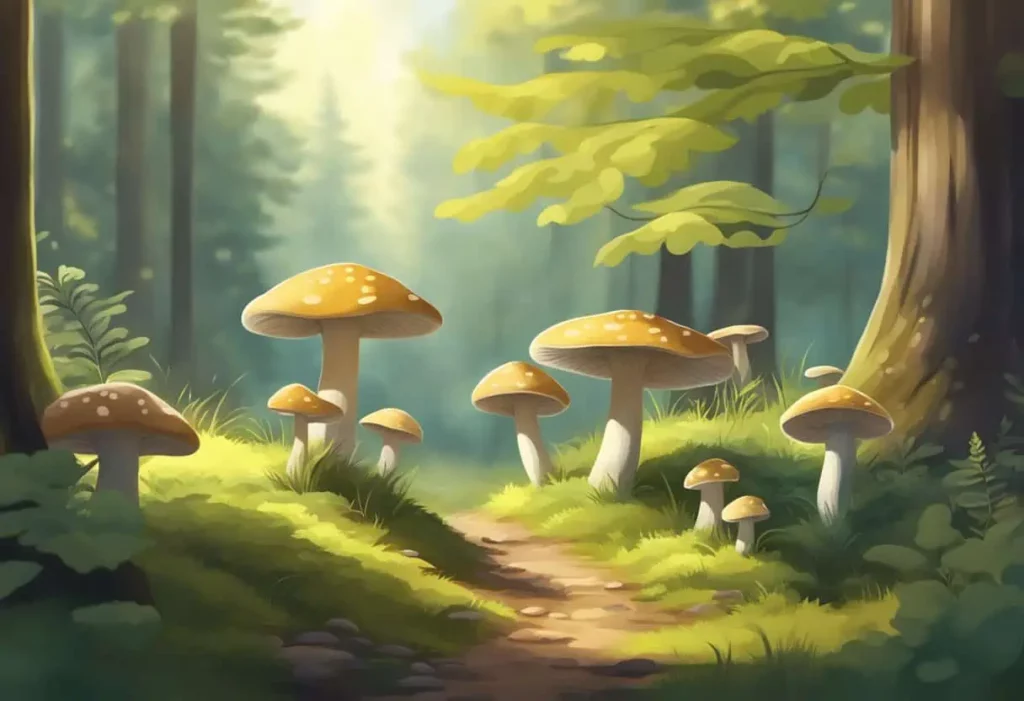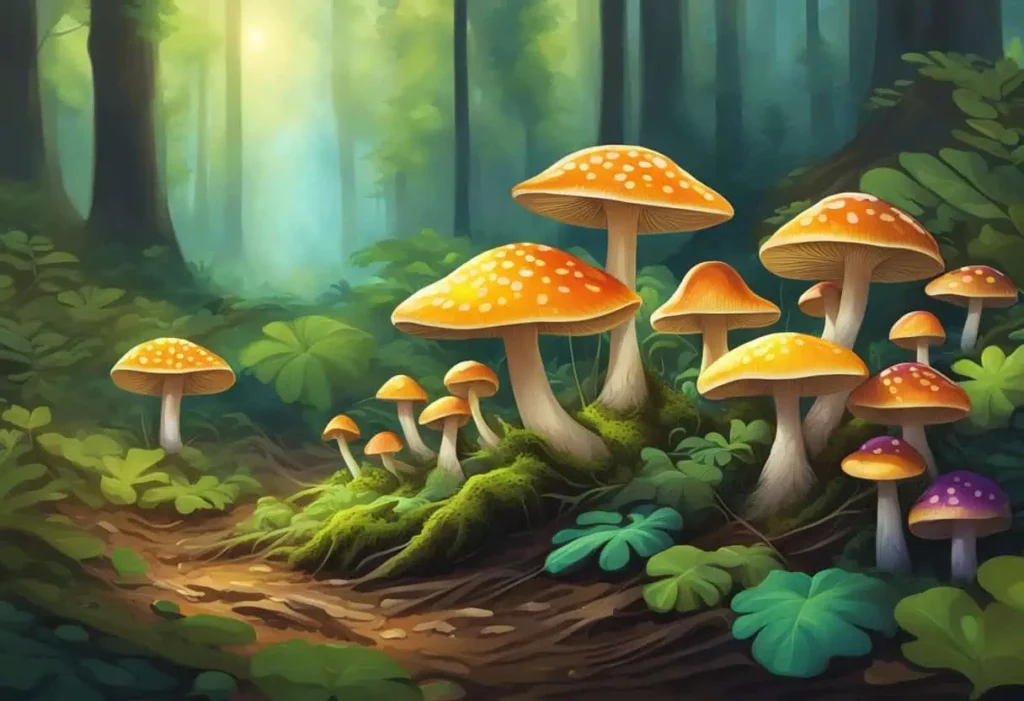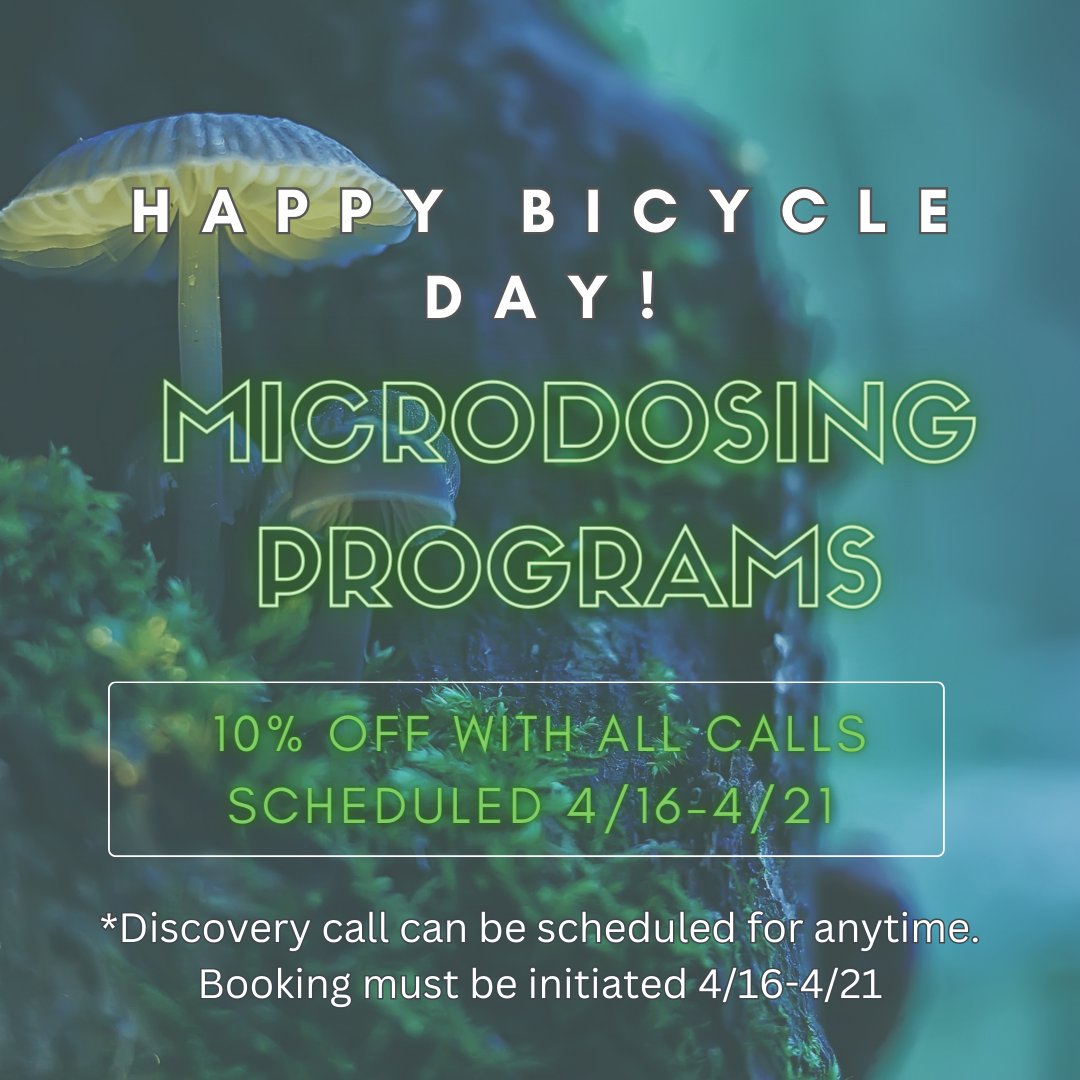Psilocybin is a naturally occurring psychoactive compound. It is found in a variety of mushroom species commonly referred to as magic mushrooms. Its history dates back to ancient times when it was used for religious and spiritual purposes by indigenous cultures.
In recent years, psilocybin has gained significant attention from the scientific community for its potential therapeutic benefits.
The chemical structure of psilocybin allows it to interact with serotonin receptors in the brain. This interaction can lead to altered perceptions and changes in thought patterns.
While its psychological effects have sparked curiosity and recreational use, there is an increasing interest in understanding its therapeutic applications.
Clinical studies have begun to examine psilocybin as a treatment for various conditions, including depression, anxiety, and PTSD. Some of these studies have shown promising results.
While regulation and legality of psilocybin vary by region, rigorous scientific research is helping to shape public policy and challenge the stigma associated with psychedelic substances.
A comprehensive understanding of its potential risks and side effects is crucial to assess its safety and efficacy as a therapy.
Key Takeaways
- Psilocybin is a psychoactive compound found in certain mushrooms, valued for therapeutic potential.
- Its interaction with serotonin receptors can alter perception and has therapeutic implications.
- Research and changing regulations are shaping the understanding and use of psilocybin.
Historical Context
The enduring intrigue around psilocybin mushrooms extends from their ancient ceremonial use to pivotal twentieth-century research that reshaped perceptions of their potential. The historical narrative of psilocybin is marked by traditional cultural practices and a modern resurgence in scientific interest.
Traditional Uses
The Aztecs referred to psilocybin mushrooms as teonanácatl, meaning “divine mushroom”. They harnessed these fungi in religious ceremonies for their hallucinogenic properties. They respected these mushrooms for the profound spiritual experiences they induced, deeply woven into their cultural fabric. This historical use underscores the prominence of psilocybin in pre-Columbian Mesoamerica, where it played a significant role in shaping spiritual and religious contexts.
Modern Research Beginnings
In the mid-20th century, structured research into psilocybin mushrooms began. Figures such as Timothy Leary, a Harvard psychologist, pioneered early studies exploring the therapeutic potential of psilocybin mushrooms.
Leary’s work sparked a wave of interest in psychedelics during the 1950s and 60s, positioning them at the forefront of scientific and cultural exploration. This era initiated robust debates and widespread interest concerning psilocybin’s psychological effects, therapeutic applications, and social implications. Eventually, these discussions influenced its legal status and availability for research.
Chemical Properties
The chemical properties of psilocybin are intrinsic to its biological activity and interaction with the brain. They represent a crucial aspect of understanding the compound at a molecular level.
Psilocybin and Psilocin
Psilocybin is a naturally occurring psyptamine compound and a prodrug. This means it is biologically inactive until it is converted into its active form, psilocin.
Upon ingestion, psilocybin is dephosphorylated into psilocin, which is structurally similar to serotonin, a key neurotransmitter in the brain. The chemical formula for psilocybin is C12H17N2O4P, while for psilocin, it is C12H16N2O.
| Psilocybin | Psilocin | |
|---|---|---|
| Formula | C12H17N2O4P | C12H16N2O |
| Molar Mass | 284.25 g·mol−1 | 204.27 g·mol−1 |
| Solubility | Soluble in water | Soluble in water, methanol |
Psilocin interacts with serotonin receptors in the brain, specifically the 5-HT2A receptor. This interaction is thought to cause the psychoactive effects. It exhibits both serotonin-like and antiserotonin properties, influencing neurons and the central nervous system.
Biosynthesis
Psilocybin is produced by psychedelic mushrooms via a biosynthetic pathway. At a molecular level, it starts with the amino acid tryptophan, which undergoes several enzymatic changes to become 4-hydroxy-L-tryptophan. It then further converts into psilocybin. The enzymes responsible for this process include tryptophan decarboxylase and a unique psylocybin synthase.
| Biosynthetic Step | Enzyme | Product |
|---|---|---|
| 1. Tryptophan conversion | Tryptophan decarboxylase | Tryptamine |
| 2. Tryptamine conversion | Psilocybin synthase | Psilocybin |
This biochemical synthesis demonstrates the complexity of biological transformations leading to substances with potent neurological effects.

Psychological Effects
Psilocybin is known to induce a range of psychological effects that significantly alter a user’s mental state. These effects encompass changes in perception, mood, cognition, and potentially positive shifts in personality and spirituality.
Perception Alterations
Psilocybin has been shown to induce notable alterations in perception, which can include visual and auditory hallucinations.
Users often report a distorted sense of time and space, as well as alterations in sensory perception. This can lead to a phenomenon where they may see sounds or hear colors.
These experiences are dose-dependent and can vary widely among individuals. A study from The Lancet found the compound’s safety and tolerability acceptable in a controlled environment. This reinforces the viability of its use in observed settings.
Emotional and Cognitive Impact
The impact of psilocybin on emotion and cognition is profound, influencing mood and thought patterns.
Some individuals experience intense emotions, both positive and negative, and report a heightened sense of connection with others and their surroundings.
Cognitive shifts may also lead to beneficial changes in the psychological support of patients with treatment-resistant depression, as suggested by research from SpringerLink.
Furthermore, psilocybin has been associated with a potential reduction in symptoms of psychological distress and suicidality in some cases.
Spiritual Experiences
A significant number of users report spiritual experiences during or after the use of psilocybin. They detail a sense of unity, transcendent awareness, and a restructuring of their usual interpretation of reality.
In studies examining such outcomes, participants often describe encounters that impart profound meaning and personal significance. These experiences can have lasting positive effects on their sense of self and worldview.
These experiences can be transformative and contribute to long-lasting changes in personality traits, such as increased openness.
Therapeutic Applications
Recent research has illuminated the potential of psilocybin as a therapeutic agent, particularly in the realms of mental health disorders and end-of-life psychology.
Clinical trials have shown promising results, indicating that psilocybin therapy may offer benefits for patients suffering from various psychological conditions.
Mental Health Disorders
Patients grappling with depression, anxiety, and post-traumatic stress disorder (PTSD) have been at the forefront of investigations into psilocybin’s therapeutic properties.
Studies have revealed that psilocybin, when administered in controlled settings, may provide significant relief from depressive symptoms.
Moreover, clinical trials suggest that psilocybin-assisted therapy can lead to rapid and sustained reductions in anxiety among patients with life-threatening cancer diagnoses. This sheds light on its potential as a treatment modality in psychiatric care.
In connection to PTSD, research indicates that psilocybin therapy might facilitate emotional release and cognitive flexibility. This fosters a healing environment for individuals who have experienced trauma.
Institutions like the National Institutes of Health are beginning to recognize the importance of such studies in expanding treatment options for chronic mental health conditions.
End-of-Life Psychology
Navigating the psychological distress associated with terminal illnesses is another area where psilocybin has shown therapeutic promise.
In cancer patients facing the end of life, psilocybin-assisted therapy has been found to alleviate existential distress, improve quality of life, and reduce the fear of death.
The administration of psilocybin has the potential to engender transformative experiences, offering a profound sense of connectedness and spiritual well-being. These can be particularly comforting during this challenging phase of life.

Recreational Use
Recreational use of psilocybin, primarily through ingestion of psilocybin mushrooms, has both cultural significance and varied methods of consumption. It is influenced by the individual’s mindset (‘set’) and physical and social environment (‘setting’).
Cultural and Social Aspects
Psilocybin mushrooms have been a part of indigenous rituals and modern counterculture. They are often associated with seeking spiritual enlightenment or personal insight. In recreational settings, they serve as a means to experience altered states of consciousness. These mushrooms are commonly used in groups due to the shared experience and social bonding. However, recreational drugs like psilocybin are illegal in many regions.
Psilocybin has resurged in popularity, fitting into the wider psychedelic revival that values personal growth and camaraderie.
Usage Methods
Recreational users generally consume psilocybin orally. The mushrooms are either fresh or dried. It’s not uncommon for users to prepare tea infused with psilocybin mushrooms as a palatable ingestion method.
Dosage varies, with dried mushrooms weighed out in grams and fresh mushrooms in much larger amounts due to their higher water content. The format of consumption, be it tea, dried mushrooms, or fresh ones, influences the onset and duration of the psychoactive effects.
The use of psilocybin is often planned, with individuals paying careful attention to “set and setting” to ensure a safe and enjoyable experience.
Legality and Regulation
Understanding the complex landscape of psilocybin legality involves navigating various regulations and legal statuses across jurisdictions.
Specific laws governing psilocybin can vary greatly from one country to another. Within the United States, federal and state laws often have significant discrepancies.
Controlled Substances Act
Under the Controlled Substances Act (CSA), psilocybin is classified as a Schedule I substance. The Drug Enforcement Administration (DEA) regulates this classification.
This means that psilocybin is deemed to have a high potential for abuse, no currently accepted medical use in treatment in the United States, and a lack of accepted safety for use under medical supervision.
- Schedule I Classification:
- Criteria: High potential for abuse, no approved medical use, lack of safety.
- DEA’s Stance: Strict regulation, enforcing the CSA’s provisions.
Global Legal Status
The legal status of psilocybin varies globally, with different countries having their laws governing the possession, use, and distribution of psilocybin mushrooms and their active compounds.
- Examples of Legal Status:
- Some countries have decriminalized the possession of small amounts of psilocybin.
- Certain jurisdictions permit the use of psilocybin for scientific or medical research.
- Other nations maintain strict prohibitions, aligning with international drug control treaties such as the United Nations Convention on Psychotropic Substances.
| Country | Legal Status |
|---|---|
| Netherlands | Truffles legal, mushrooms prohibited |
| Brazil | Possession and cultivation decriminalized |
| Jamaica | Legal for use in religious ceremonies |
| United States | Illegal under federal law, some state variations exist |
Entities involved in the regulation of psilocybin, such as the DEA, play a significant role in law enforcement and policy-making regarding its legal status. The complexity of psilocybin’s legality is a subject of ongoing discussion, with emerging research influencing legislation worldwide.
Potential Risks and Side Effects
While exploring the therapeutic potential of psilocybin, it’s imperative to remain aware of the range of potential risks and side effects that can accompany its use.
Acute Psychological Risks
Psilocybin has been associated with transient psychological disturbances. During or shortly after ingestion, individuals may experience distress or panic due to altered perception and thought patterns.
In some cases, this can lead to behaviors that risk the safety of themselves or others. Although the probability is low, there exists a risk of enduring psychological conditions sparked by psilocybin use, particularly for individuals with a family history of mental health disorders.
Physical Health Concerns
Regarding physical health, the evidence suggests that psilocybin has a relatively low toxicity profile. However, it is not devoid of physical side effects.
Some individuals may experience nausea and vomiting, which are among the most common adverse reactions. Psilocybin can also potentially cause muscle weakness and lack of coordination.
These physical effects can increase the risk of accidents, especially in unsupervised settings.
Concerning poisoning and addiction, studies indicate that while the abuse potential for psilocybin exists, it is significantly lower compared to other substances.
Nevertheless, accidental poisoning can occur, especially with the misidentification of wild mushrooms that contain psilocybin.

Comparative Studies
This section explores the distinctive features and interactions of psilocybin compared to other psychedelics and substances.
Readers will gain insights into how psilocybin’s effects vary when assessed alongside similar compounds, and its behavior in the presence of cross-tolerance scenarios.
Psilocybin vs Other Psychedelics
Psilocybin is one of several well-known psychedelics that has been frequently studied for its effects on the human psyche.
When compared to LSD (lysergic acid diethylamide), another potent serotonergic psychedelic, they exhibit similarities in their mechanisms of action. Both primarily activate the serotonin 5-HT2A receptors.
However, in terms of duration and intensity of effects, LSD tends to produce lengthier experiences, typically ranging from eight to twelve hours, whereas psilocybin’s effects usually last four to six hours.
Researchers have also examined the acute subjective effects of mescaline, finding differences and overlaps in the user’s experience compared to psilocybin.
As for DMT (dimethyltryptamine), it is known for its rapid onset and short duration, contrasting with psilocybin’s more prolonged effects.
Investigative studies have demonstrated that, despite sharing a common chemical backbone, the subjective experiences induced by psilocybin can be quite distinct from those of mescaline and LSD.
This assertion has been supported by various controlled studies, such as one documented in a comparative acute study. This study highlights the nuances that distinguish classic psychedelics like psilocybin from one another in terms of their subjective effects on humans.
Drug Interaction and Cross-Tolerance
Psilocybin’s interaction with other substances, such as alcohol, can lead to unpredictable and often intensified effects.
Careful consideration must be taken when combining psilocybin with other psychoactive compounds due to possible potentiation or adverse interactions.
Cross-tolerance is particularly relevant among the serotonergic psychedelics. Due to their similar action on serotonin receptors, using psilocybin can result in a temporary tolerance to other psychedelics, like LSD or mescaline.
This cross-tolerance means that following the use of psilocybin, a user might require a higher dose of LSD to achieve previous effects. However, data also suggest differences in tolerance onset and duration depending on the specific substances involved.
For example, hallucinogenic mushrooms typically contain psilocybin, and consuming them can lead to a cross-tolerance with synthetic psychedelics.
Frequently Asked Questions
This section addresses common inquiries regarding the psychoactive compound psilocybin, providing factual insights into its therapeutic potential, neurological effects, legal status, clinical use, risks, and its comparison with other psychedelics.
What are the potential therapeutic uses of psilocybin for mental health?
Research suggests psilocybin has promising therapeutic potential, particularly in treating depression and anxiety. Studies like the Challenging Experience Questionnaire explore these benefits, though further investigation is necessary to fully understand its applications in mental health.
How does psilocybin interact with the brain to produce psychoactive effects?
Psilocybin primarily affects the brain by binding to serotonin receptors, which significantly alters perception, mood, and cognition. These effects are core to the psychoactive experience and insights reported by users.
What is the legal status of psilocybin in various countries around the world?
The legal status of psilocybin varies globally, with it being categorized as an illegal substance in many countries. However, there’s a growing trend towards decriminalization and research into its medicinal properties in nations like the United States and Canada.
How can psilocybin be safely administered in a clinical setting?
Safe administration in a clinical setting involves controlled dosages, screening for contraindications, and professional support throughout the experience.
Guidance from trained facilitators is also deemed important, as suggested by findings on psilocybin-assisted therapy for depression.
What are the possible risks and side effects associated with psilocybin use?
Side effects can range from mild physical discomfort to psychological distress, known as challenging experiences. The extent and intensity of side effects can depend on the dose, setting, and individual psychological factors.
How do the effects of psilocybin compare to other psychedelics?
The effects of psilocybin are often compared to those of LSD. This comparison is made in terms of the altered states of consciousness and duration of action. However, the subjective experiences can significantly differ due to variations in chemical structure and receptor activity.
Last Updated on March 28, 2024 by Megan Mbengue, BSN, RN, CHPN


